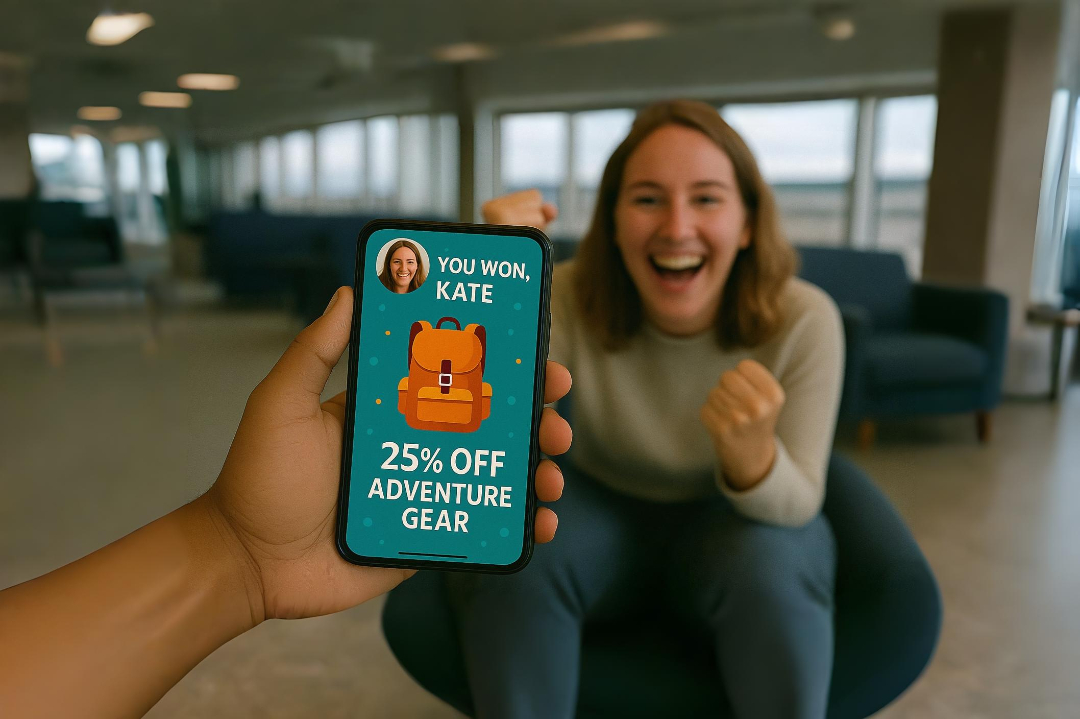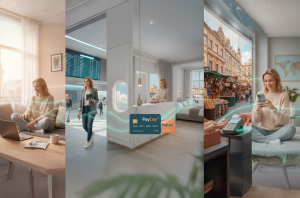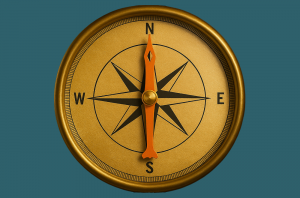Every loyalty program aims to be relevant to its members by offering personalized experiences, attractive offers, rewards, and benefits. However, many programs fall short, relying on basic campaigns and generic gamification tactics that only provide temporary interest. At LPS, we believe that true relevance also encompasses individual emotions and motivators, also known as personalized gamification. By addressing these, we can capture attention, which is one of the most valuable currencies in customer relationships. Personalized gamification is changing the way brands connect with their audiences by turning every interaction into an emotionally relevant experience.
With the help of AI and advanced data analytics, personalized gamification offers a way to connect more deeply with customers by appealing directly to their intrinsic motivators, be it a sense of achievement, recognition, healthy competition, or social connection.
In this article, we explore the shortcomings of generic gamification, explain how intrinsic motivation drives sustained customer engagement, and reveal why personalization is key. We also discuss how flexible gamification mechanics can be adapted across multiple touchpoints, creating a cohesive and meaningful customer experience.
The Pitfalls of Superficial Gamification
Basics
One-size-fits-all
Disconnect
Campaigns? Gamification?
When classifying mechanics in a loyalty program, it is sometimes hard to distinguish between campaigns and gamification applied in loyalty program context. In some cases, especially with complex campaigns, gamification elements can be part of them (e.g., a challenge mechanic used in a holiday shopping campaign). And sometimes gamification elements may appear as or in traditional campaigns.
In fact, there are significant differences.
Gamification is about designing the program to be inherently engaging, and targets to increase engagement, interaction and motivation long-term.
Campaigns are tactical, time-bound, goal-specific marketing initiatives designed to drive specific customer behavior, focusing on transactions.
They can use gamification as a tactic, but it isn’t gamification itself.
With the help of AI and advanced data analytics, personalized gamification offers a way to connect more deeply with customers by appealing directly to their intrinsic motivators, be it a sense of achievement, recognition, healthy competition, or social connection.
In this article, we explore the shortcomings of generic gamification, explain how intrinsic motivation drives sustained customer engagement, and reveal why personalization is key. We also discuss how flexible gamification mechanics can be adapted across multiple touchpoints, creating a cohesive and meaningful customer experience.
- Always-on or recurring features
- The focus on user motivation and engagement through behavioral psychology
- Encouragement of members to interact regularly
Harnessing Intrinsic Motivation Drivers
There are various researches about the benefits of addressing intrinsic motivators in loyalty, e.g. “Beyond experiential spending: Consumers report higher well-being from purchases that satisfy intrinsic goals” [1] and “Decoding loyalty: Analyzing the relationship between consumer motivations to adhere and key features driving ongoing participation in loyalty programs” [2]. They show that intrinsic motivators lead to deeper emotional connections and higher satisfaction levels than programs relying solely on extrinsic rewards. This understanding is changing how leading brands design loyalty programs – shifting focus from external rewards to inner motivation. Our work with airline loyalty initiatives reflects this understanding. These programs have successfully harnessed intrinsic drivers by creating mechanisms that resonate on a personal level, showing clear engagement benefits over time. Programs that effectively and individually balance and address extrinsic and intrinsic motivation show long-term engagement benefits.
Authentic engagement comes from within. Instead of focusing solely on extrinsic rewards like discounts or random prizes, effective gamification taps into intrinsic motivators which are
Achievement
Recognition
Competition
Social Connection
Flexible Gamification Mechanics Across Multiple Channels
Let us discuss what the key elements of a well-rounded gamification concept in a loyalty program are to create a gamified and compelling experience for the members.
Metric System
Metrics (e.g., points) track customer interactions and give them clear signs of progress, which can and should be communicated to the customer, e.g., in progress bars.
Also, metrics can be linked to tangible and intangible benefits and rewards, making each interaction feel worthwhile.
Tailored challenges and rewards
Based on historical data, current situation, activities, and behavior, challenges that adjust to a customer’s progress help maintain a sense of purpose during every engagement. In a multi-step challenge the size of the steps may also increase. Challenges may include mechanisms like sweepstakes, quizzes and streaks.
For example, a retailer may implement personalized gamification by analyzing customers’ purchase patterns and browsing history. For some of them he designed a milestone challenge for products they seldom purchased, but often browsed for, offering a frequently purchased product as incentive. For other customers he counts the frequency of shop visits and incentivized them with frequent shopper badges, where each badge increases his personal discount by x% up to a maximum discount.
Recognition Mechanisms
Social and Competitive Dynamics
Communication
Consistency of Gamification Across Channels
Another aspect is that today’s consumers interact with brands through a mix of digital and physical channels. A loyalty program that succeeds in one channel but falls short in another loses out on potential long-term engagement. Flexible gamification mechanics are designed to work seamlessly across web, mobile, and in-store environments. Omnichannel consistency ensures that whether a customer is on the website, mobile app, or in the physical world, the experience feels connected.
Consider a scenario where a mobile app notifies customers of a new challenge when they visit a physical store. Additionally, customers receive instant recognition via an updated leaderboard that reflects their local community’s achievements. This type of omnichannel integration not only reinforces the overall brand experience but also makes customers feel that their every interaction matters.
The Power of Personalization in Gamification
Personalization is not just a buzzword. It’s the backbone of any effective gamification strategy. It’s also a major force changing how loyalty programs are conceived – moving from mass incentives to individual journeys. Thanks to advancements in AI and data analytics, brands can now craft gamified experiences that meet the taste and adapt to habits and preferences of each customer. Personalization ensures that the program feels relevant on an individual level.
Personalization also means that challenges are realistic on an individual level. The goal to reach can be challenging, but has to be reachable for a customer, capable and possible. Otherwise, the customer would ignore this as an “out-of-range” challenge.
Imagine a customer who loves outdoor adventures. Rather than receiving a random discount code, this customer might be offered a challenge that rewards with adventure points, leading to a special experience or product that aligns with their interests.
It’s this level of personalization that transforms a standard rewards program into an experience that customers look forward to being part of.
Benefits of Effective Personalized Gamification
When done right, personalized gamification does more than just amuse: it translates directly into measurable business results. While the numbers and percentages differ by vertical, by brand, and by type of loyalty program, the direction is clear. Companies can expect to see benefits such as
- Increased engagement: Tailored, personalized program interaction and recognition options lead to more frequent and meaningful interactions.
- Increased retention rate: Sustained engagement directly impacts customer retention. Studies have shown that loyalty programs addressing both extrinsic and intrinsic motivations can boost customer retention and increase customer lifetime value.
- Addressing new customer groups: Gamification opens up new options to interact with the loyalty program outside of the core product, and thus can address new customer groups, e.g. put a focus on younger customers
- Increased revenue: When customers feel a personal connection with a brand, they tend to make more repeat purchases.
- Data insights: Personalized gamification helps capture relevant insights into customer preferences. This data loop enables ongoing refinement and adaptation to the customer and to the program, ensuring that future challenges and rewards remain aligned with evolving customer needs.
Things to avoid with Gamification
Adding gamification elements just because it’s trendy won’t bring the desired outcome. And: when applying gamification there are some things that should be avoided, as they may be counterproductive.
- Gamification without a goal: define which primary and secondary target(s) the gamification approach should address
- Gamification is not a magical fairy dust: make sure that the product is attractive by itself
- Creating a game instead of a gamified product: Too many game features that overshadow core user tasks
- Manipulating customers: never make users do things in an unethical way
- Misused gamification: Visual/cognitive noise and distraction shouldn’t stand in the way of task completion
- Freedom of choice: Never force users, some of them are not willing to play
- One fits all: gamification per se is not inherently personalized. Every customer is different, and so should be your gamified program
Conclusion
Personalized gamification is far more than a fleeting trend. It’s a transformative approach that redefines customer engagement, if considered as an inherent part of the loyalty program. By moving beyond generic rewards and tapping into intrinsic motivators like achievement, recognition, competition, and social connection, considering gamification as strategic and inherent element of the program, brands can build lasting loyalty that drives repeat business and revenue growth.
At LPS, our strategy is rooted in a deep understanding of customer behavior and advanced data analytics. We design gamification experiences that are not only personalized but also seamlessly blended across all channels, ensuring unified and immersive customer experience. If you are looking to refine your loyalty program and make meaningful connections with your customers, it’s time to consider a more tailored approach.
For further insights on turning your loyalty program into an effective engagement engine, visit our Knowledge Hub. To learn more about how our comprehensive solutions can help you build lasting customer relationships, check out our pages on Full-Service Loyalty, Consulting Services, and Innovation & Enhancement.
Ready to move away from gimmicks and invest in a loyalty program that truly resonates? Contact LPS today to explore how personalized gamification strategies can transform your customer engagement for the long term.
While no system is perfect, the genuine approach to personalized gamification we follow at LPS has consistently delivered measurable results. It’s part of broader movement that’s changing how brands think about loyalty – from transactional rewards to emotional, lasting connections. By addressing what truly motivates customers and adapting to their unique journeys, we continue to help brands create loyalty programs that are both impactful and enduring.
Sources:
[1] Beyond experiential spending: Consumers report higher well‐being from purchases that satisfy intrinsic goals, Olaya Moldes, March 2022
[2] Pratas, J., Oliveira, Z., Teixeira, S., Teixeira, S. (2025). Decoding Loyalty: Analyzing the Relationship Between Consumer Motivations to Adhere and Key Features Driving Ongoing Participation in Loyalty Programs. In: Reis, J.L., Cascalho, J., Peter, M.K., Reis, L.P., Tiago, M.T. (eds) Marketing and Smart Technologies. ICMarkTech 2024. Smart Innovation, Systems and Technologies, vol 439. Springer, Singapore. https://doi.org/10.1007/978-981-96-3081-3_16






